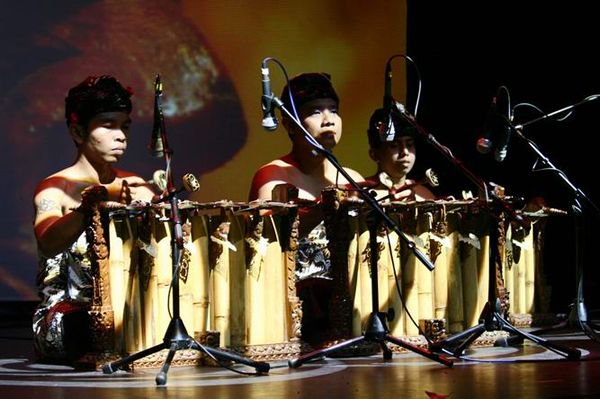| Gamelan gender wayang |

Gamelan gender wayang is a style of gamelan music played on Bali, Indonesia. It is required for wayang and other, most sacred Bali Hindu rituals. The smallest of gamelan ensembles, it requires only two players and is complete at four, the additional instruments doubling an octave above. Like other gamelan genres it incorporates delicate interlocking melodies and active contrapuntal movement, yet poses unique challenges in technique and composition.
The term gamelan may be loosely translated as ‘musical ensemble’ or ‘orchestra’. It refers to the traditional musical ensembles found on the Indonesian islands of Bali, Java and a few others.
A gender is a metallophone (Xylophone-like instrument with metal keys) consisting of bronze keys suspended over tube resonators.
Wayang means ‘shadow puppet’ and ‘shadow puppet performance’. The puppets are flat painted leather, painstakingly carved.
Gamelan gender wayang is named for its role in accompanying the wayang shadow puppet play, although its use is not limited to this function. The gamelan consists principally of four metallophones, interchangeably referred to as gender or gender wayang. Each gender has ten bronze keys suspended over tuned bamboo tube resonators. These ten keys span two octaves of the five-tone scale, which is called slendro. Two of the instruments, called pemade, sound in the low and middle octaves. They are complemented by the two kantilan, which double the middle octave and continue into the high octave. Thus gamelan gender wayang has a total range of three octaves. Wayang stories are generally drawn from the Hindu epic the Mahabharata. |
|
|
